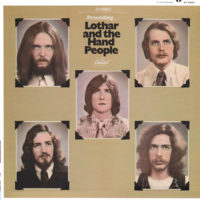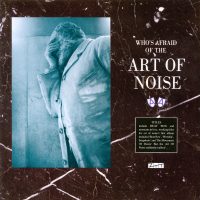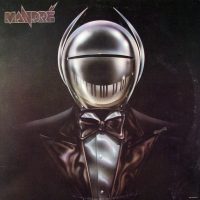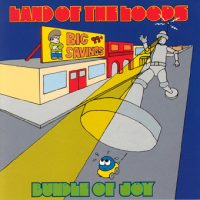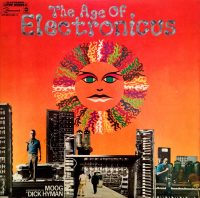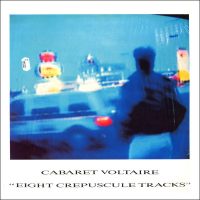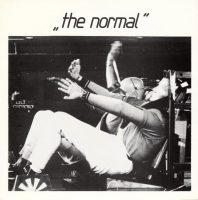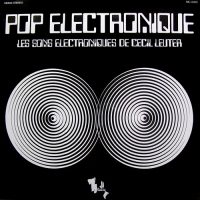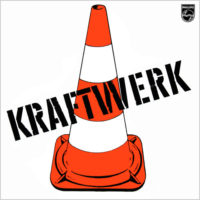
Musicians sometimes have very poor insight into what constitutes their best work. Bob Seger and Alex Chilton come to mind. One of the most extreme cases of this unfortunate phenomenon is Kraftwerk. The legendary German group’s founders—Ralf Hütter and the late Florian Schneider-Esleben—are/were undoubtedly intelligent people, but for baffling reasons, they refuse(d) to acknowledge the existence of their pre-Autobahn releases. It’s a shame, because Kraftwerk, Kraftwerk II, and Ralf & Florian represent some of their greatest, most adventurous creations.
Like many of their early ’70s Deutschland compatriots (Can, Tangerine Dream, Neu!, Faust, Popol Vuh, Et Cetera, etc.), Kraftwerk were both striving to distinguish themselves from post-WWII German culture and not simply imitate the era’s dominant Anglo-American rock paradigms. Operating under this liberating notion, Kraftwerk created some of the most revolutionary experimental rock and electronic music of all time. Most heads still aren’t ready to absorb the genius percolating on these early records (plus that of Tone Float by Organisation, Ralf and Florian’s pre-Kraftwerk band).
The sounds on Kraftwerk et al. diametrically oppose the precise, linear driving musik and robotic electro-funk that marked their work from the mid-’70s onward. No doubt, all of that stuff should be revered, too, and its influence is staggering. But it’s so frustrating that the creators of those early releases disown them, making the LPs ripe for bootlegging and gray-area reissues. I normally don’t condone buying those, but in this case, do what you gotta do to get ’em.
So, finally, to Kraftwerk’s debut album. Produced by the studio wizard Conny Plank, it consists of four long tracks, each a mind-blower. Opener “Ruckzuck” (translation: Right Now) is the pinnacle of flute-centric avant-rock. Schneider’s electronically treated instrument stutters and splutters with contrapuntal ingenuity, forming a mesmerizing motif over Andreas Hohmann’s motorik drums and Hütter’s guitar stabs and organ whorls. An interlude of cymbal and warped-to-hell flute crescendos will shock you with a horror-film force. That rupture is indicative of a piece that keeps regenerating, changing tempo, accruing strange textures, ebbing and flowing, and throwing surprises at your ears at a frantic rate. “Ruckzuck” is nightmarish yet euphoric psychedelic music as you’ve never heard it before. Schneider proves himself to be the Sonny Sharrock of the flute, a mad genius who took his instrument’s timbres to heretofore unexplored and untamed realms..
“Stratovarius” (Schneider plays violin, too) resembles Can’s “Aumgn,” emitting several minutes of maleficent squall and alienating drones. Eventually, a slack, quasi-funky rhythm emerges along with cantankerous guitar feedback and squawks. When the song shifts into a freak-rock rave-up à la Can’s “Outside My Door,” it reveals Kraftwerk deconstructing rock into fascinating shapes while ratcheting up the intensity to horrifying dimensions. “Megaherz” is an electronic experiment in extreme dynamics and tonalities, but it’s not without its tender, beautiful passages. The one in which Schneider’s flute and Hütter’s organ and triangle cohere into a meditative respite is exemplary.
“Von Himmel Hoch” (From Heaven Above in English) remains one of history’s maddest album-finales. It begins with a series of otherworldly aircraft noises, explosions, and alarms. Gradually, a menagerie of bizarre animal growls generated with a modified organ called a “tubon” coheres into a powerful rhythm, underscored by future Neu! member Klaus Dinger’s pugilistic drums. As some of the most fucked-up borborygmus/stomach gurgles ever laid to tape ensue, you think, “It’s too bad Roger Waters and Ron Geesin didn’t conceive these sounds for their Music From The Body LP.” Unexpectedly, the track gets urgently funky near the end, before finishing with a bass frequency explosion. WOWOW.
To reiterate, it’s shameful that Kraftwerk is out-of-print. Instead, it deserves a reissue with liner notes, previously unseen photos, bonus tracks, the works. Come on, Ralf. Quit being such a Scheisskopf. -Buckley Mayfield



